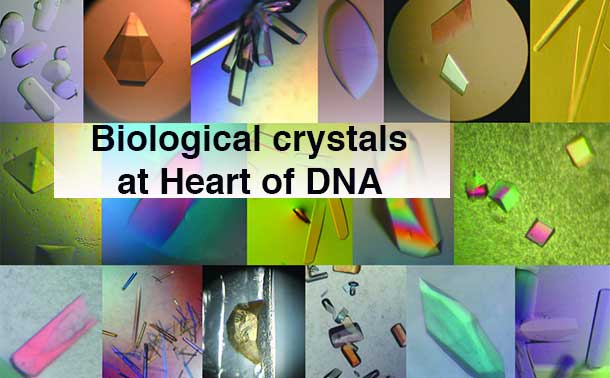
PARIS – Technology – Research into DNA can find ways to make fighting disease easier for medical science. International researchers are seeking ways to work together to share results and their research efforts. The United Nations is helping.
In Paris at the headquarters of the UN Educational, Scientific and Cultural Organization (UNESCO), International Year of Crystallography will be formally launched next Monday. This announcement will be followed by three regional summit meetings, the first in Karachi, Pakistan, from 28 to 30 April; the second in Campinas, Brazil, from 21 to 24 September; and the third in Bloemfontein, South Africa, from 15 to 17 October.
It is at the very core of revealing the structure of DNA, fabricating computer memories and designing potent new drugs, but only a tiny fraction of the world’s people are aware of the science of crystallography, a knowledge gap the United Nations hopes to help erase this year.
These meetings are to serve as platforms for exchange between decision-makers and scientists and are intended to favour the development of crystallography research.
“This year marks the centenary of the birth of modern crystallography,” Secretary-GeneralBan Ki-moon said in a message for today’s launch. “We celebrate 100 years of ground-breaking advances.”
The year 2014 marks the centennial of the birth of X-ray crystallography, thanks to the work of William Henry and William Lawrence Bragg (father and son), and Max von Laue who was awarded the 1914 Nobel Prize in Physics for his discovery of the diffraction of X-rays by crystals. In 2012 the UN General Assembly proclaimed it the International Year of Crystallography.
UNESCO, the only UN organization with a mandate covering basic sciences, was charged with coordinating related events in cooperation with International Union of Crystallography (IUCr), to highlight the continuing importance of the science and its role in addressing post-2015 development issues such as food security, safe drinking water, health care, sustainable energy and environmental remediation.
“Crystallography also has an important place as we work for inclusive sustainable development – policies that are good for people and the planet,” Mr. Ban said. The UN is now accelerating efforts towards the eight anti-poverty targets known as the Millennium Development (MDGs) and the sustainable development goals that will take over after the 2015 deadline.
UNESCO Director-General Irina Bokova and IUCr President Gautam R. Desiraju will preside over the opening session of next week’s two-day event at which scientific advances linked to crystallography and its potential for development, notably in emerging nations, will be discussed.
The science studies the composition and structure of crystals. In the early 20th century, it was discovered that X-rays could be used to ‘see’ the structure of matter in a non-intrusive manner, allowing study of the arrangement of atoms in solids and the chemical bonds that draw one atom to another. Crystallographers now apply this knowledge to modify a structure and thus change its properties and behaviour.
“Since this discovery, crystallography has become the very core of structural science, revealing the structure of DNA, allowing us to understand and fabricate computer memories, showing us how proteins are created in cells and helping scientists to design powerful new materials and drugs,” UNESCO says.
“Thus crystallography has many applications. It permeates our daily lives and forms the backbone of industries which are increasingly reliant on knowledge generation to develop new products, in widely diverse fields that include agro-food, aeronautics, automobiles, cosmetics and computers as well as the electro-mechanical, pharmaceutical and mining industries.
“On the crossroads of physics, chemistry and biology, as well as mathematics, crystallography has had numerous applications in the agro-food industry and pharmaceutics as well as technology, allowing, for example, for the development of liquid crystal screens.”
As an example of its multiple applications one of the subjects to be discussed next week is crystallography’s relations to Islamic art and architecture.
As part of the awareness-raising activities, crystallography demonstration laboratories will be set up throughout the year in universities around the world, be equipped with diffractometers, measuring instrument used to analyse the structure of a material, made available by their manufacturers free of charge.
These labs will be used to stimulate international scientific cooperation and train scientists in the use the instruments, as well as carrying out experiments in the presence of students.
A crystal growing competition will also be open to secondary school students all over the world. UNESCO and IUCr will provide interested classes with teaching kits. The competition involves using a saturated saline solution to grow a single crystal with the purpose of obtaining the largest, purest and most beautiful crystal possible.











